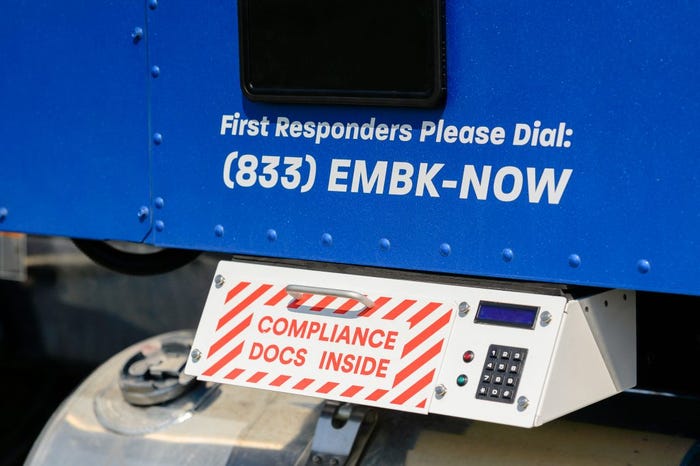What Happens When a Driverless Truck Is Pulled Over?
Embark Trucks conducts the first-ever public demonstration of the capability on the Texas roads

Have you ever wondered what a self-driving truck does when police attempt to pull it over?
San Francisco-based Embark Trucks has the answer, having successfully shown how trucks equipped with its autonomous tech can identify and stop for law enforcement vehicles, as well as establish communication protocols with officers.
Working in tandem with the Texas Department of Public Safety and the Travis County Sheriff’s Office, it has conducted the first-ever public demonstration of the capability on the state’s roads.
“Law enforcement always needs to be able to stop a commercial vehicle to ensure compliance with trucking regulations, whether it is autonomous or not,” said Emily Warren, head of public policy at Embark.
The routine traffic stop of the driverless truck was conducted on Highway 130 near Austin.
To develop the capability, Embark first had to build the functionality into its software. This included training Embark-powered trucks to identify emergency vehicles via lights and other cues and then respond accordingly by pulling over safely onto highway shoulders. Embark’s cloud-based fleet management system Guardian allows a human operator to confirm a pullover has been requested.
The second stage of the process involved establishing an interaction procedure with law enforcement that would allow an officer to safely stop, approach and receive information from a driverless truck without the need for additional equipment.
In this instance, the Embark truck was equipped with an exterior screen to signify it was an autonomous vehicle and that it had come to a halt and would not restart unexpectedly.
The officer was then able to call a toll-free number to contact a human Guardian support technician to receive a passcode to access an external lockbox on the truck. This contained information such as registration and bills of lading. In the event a citation is issued, the technician can be called back.

According to Embark, this capability has moved the company one step closer to the commercial deployment of its tech. The company has identified a total of 16 technical capabilities that are necessary before the AV system can be safely rolled out. Emergency vehicle interactions were number 12 on the roadmap, with four more to be fulfilled. Among those are evasive maneuvers and reaction in the event of blown tires.
Embark believes its demonstration can inspire other driverless truck companies.
“We hope this is a model that can be adopted across all jurisdictions as autonomous trucks hit the road,” Warren said.
How police deal with AVs has been a hot topic of discussion in recent months, most notably when San Francisco officers were left bemused after pulling over a driverless Cruise robotaxi in April.
About the Author
You May Also Like








